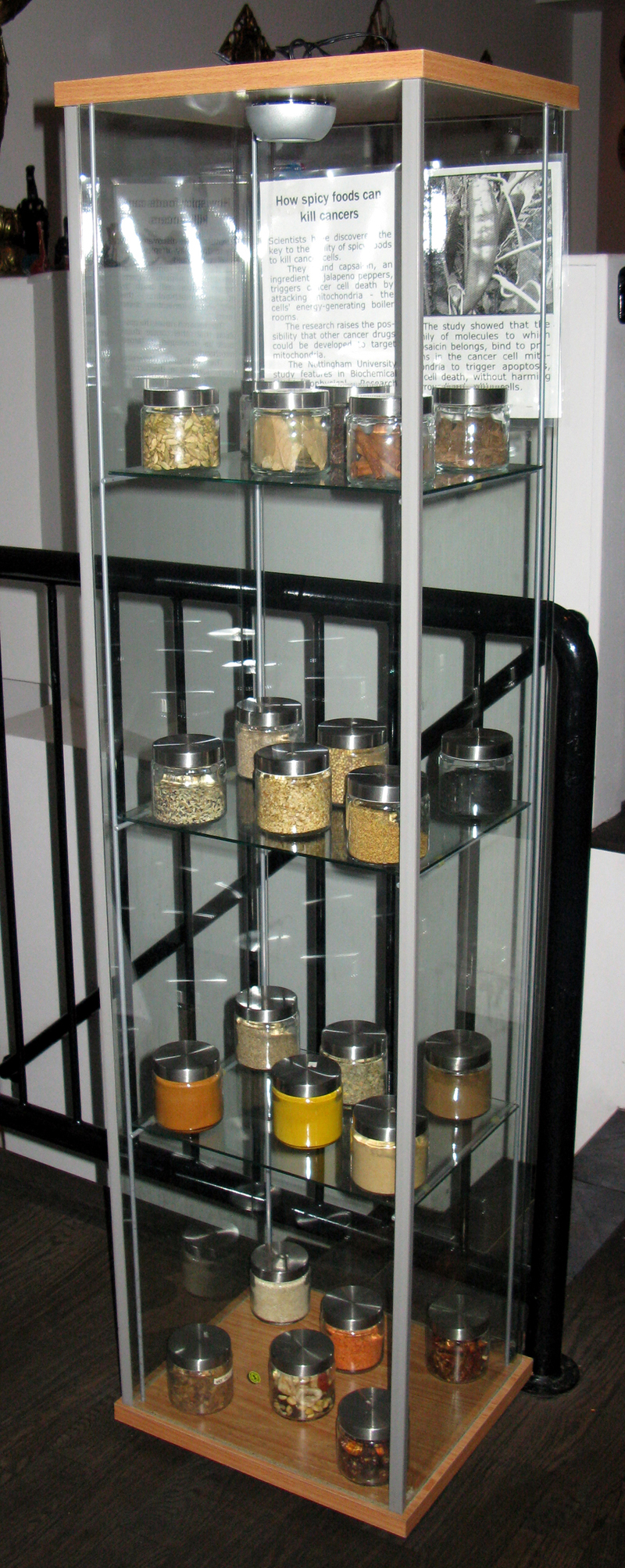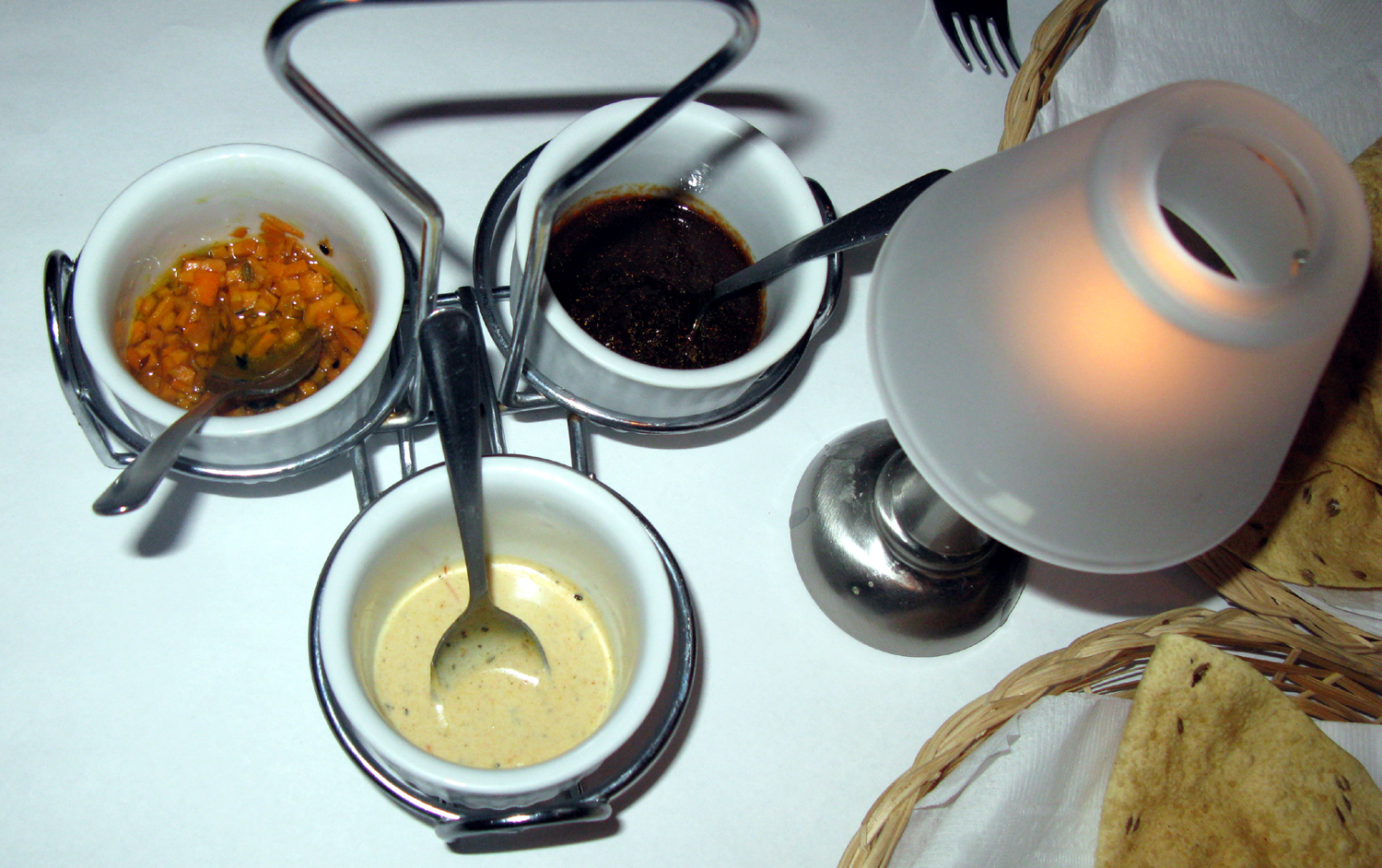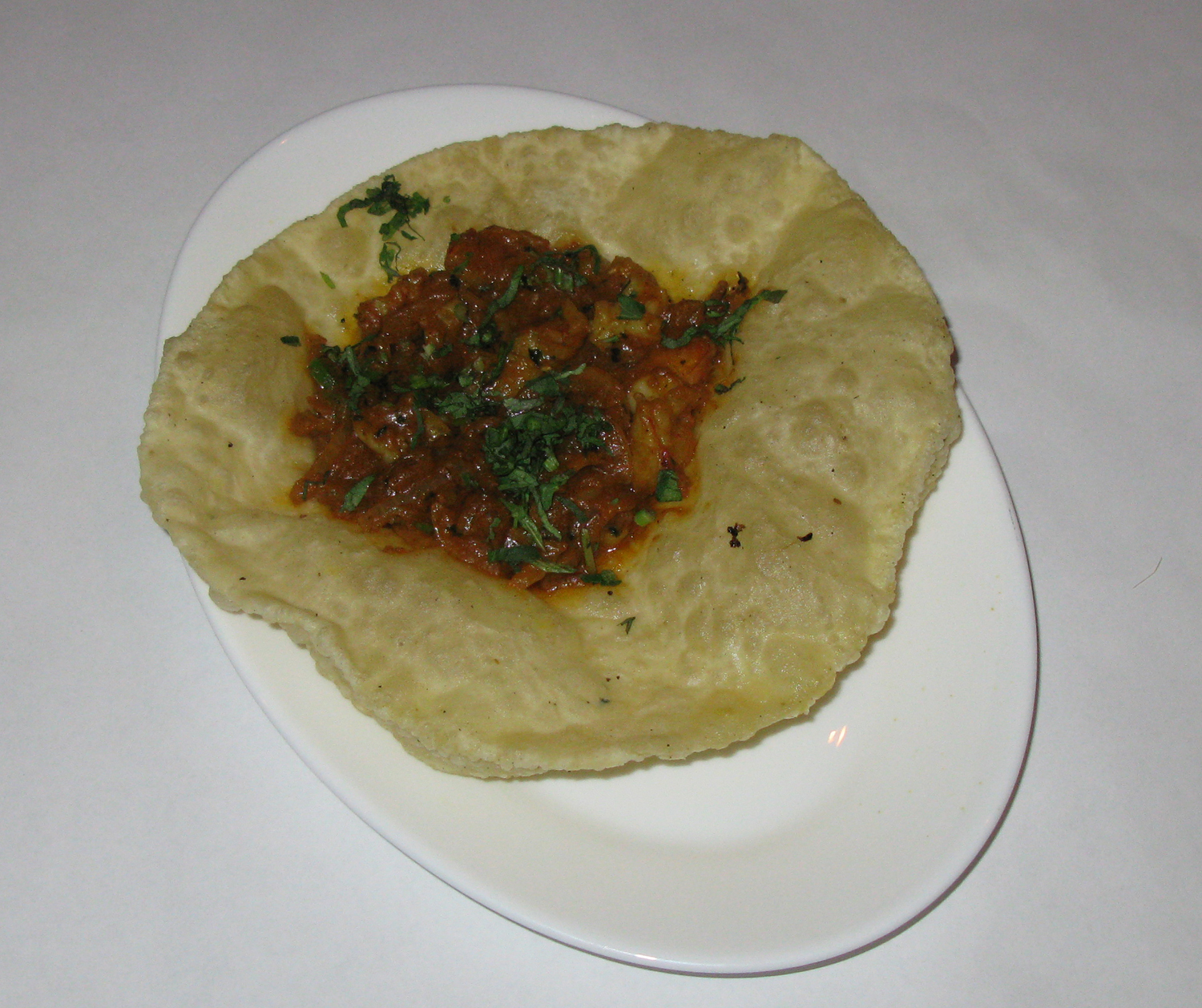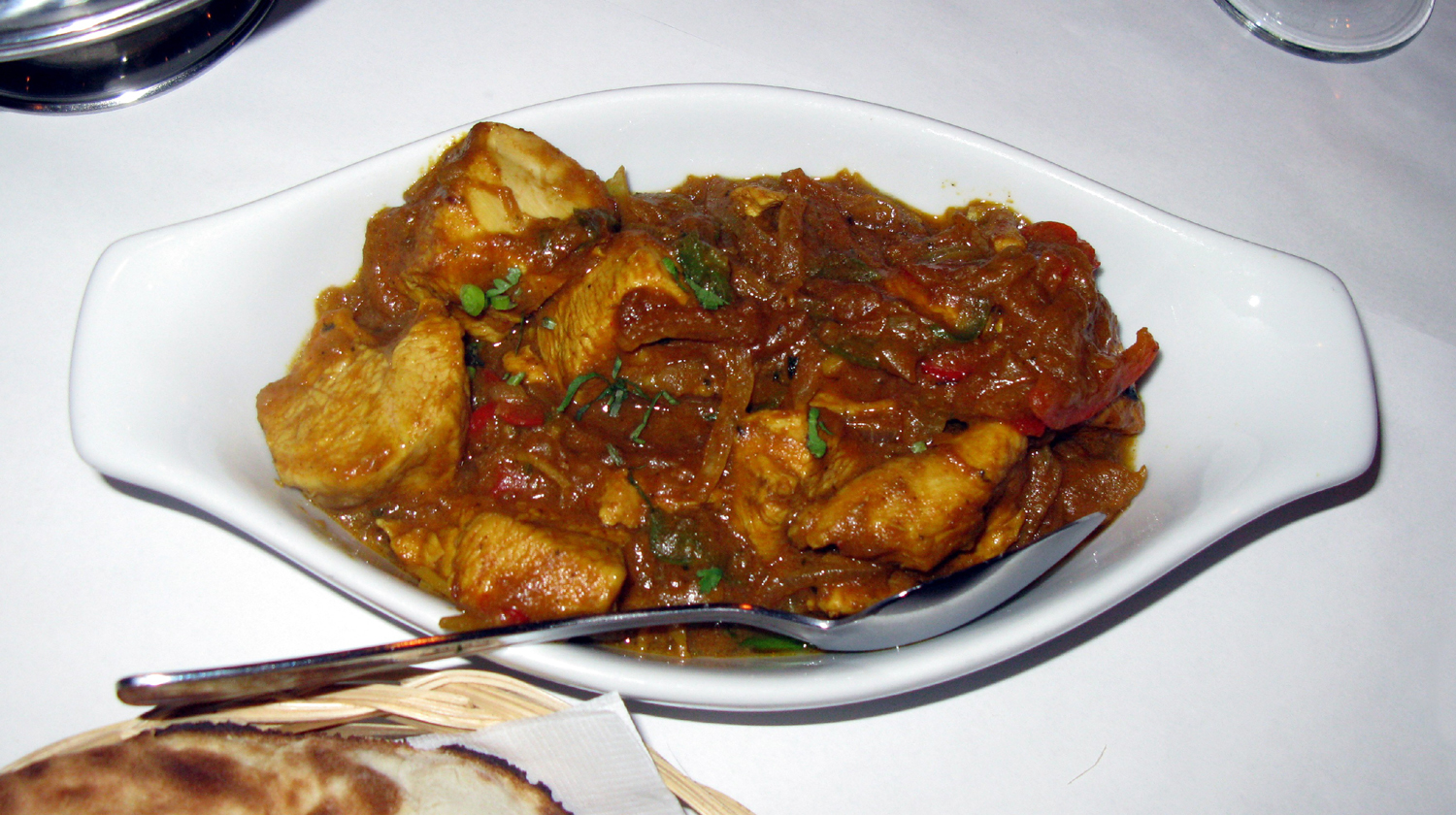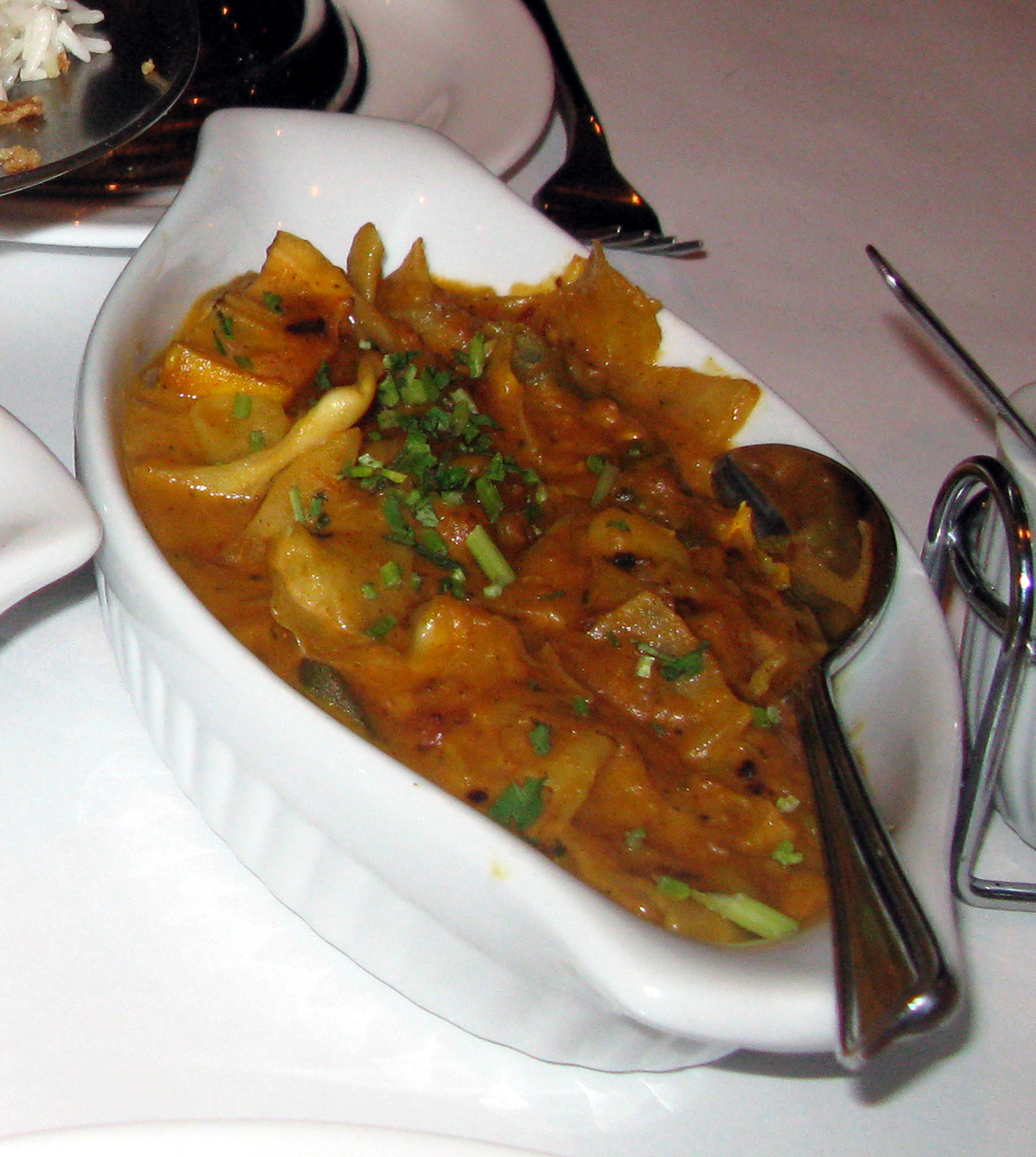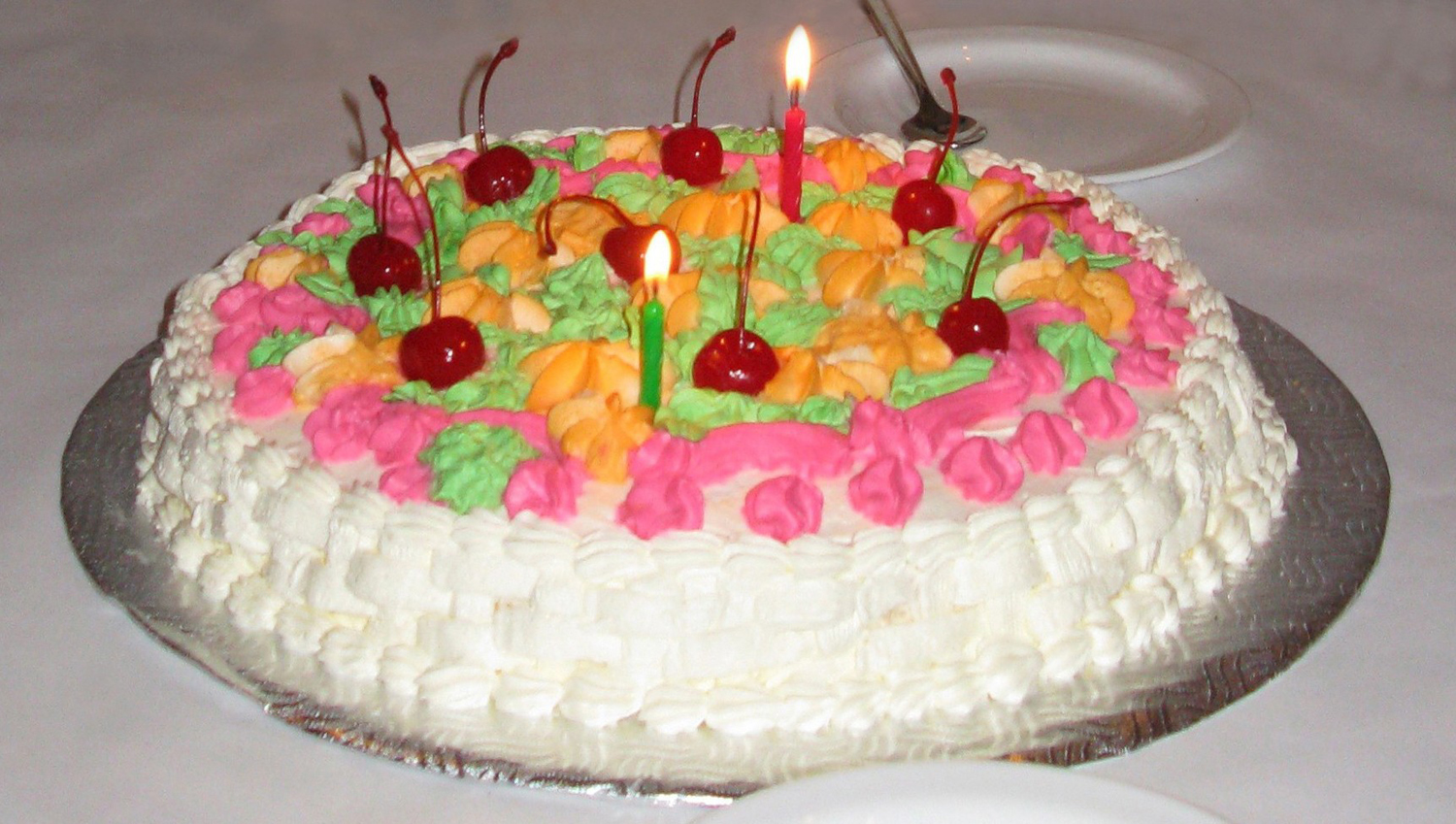Lumière de l’Inde
407 Saint Laurent Boulevard (south of Fairmount Avenue)
Montreal, Quebec H2T 1R9
(514) 448-7373
www.lumieredelinde.com
Hours: Mon-Sat: 11:30 a.m. – 2:00 p.m.; Mon-Thurs and Sun: 5:00 – 10:00 p.m.; Fri-Sat: 5:00 – 10:30 p.m.
Vegetarian-friendly
Average for meal/person, excluding wine, taxes, and tip: $20-$30
Major cards and Interac
Rating: ◊◊◊◊ (excellent)
I enjoy living life adventurously, and sometimes, when it comes to food, dangerously. There is a mystical and mesmerizing allure to exotic and ethnic cuisines, and Indian cookery, which is considered to be one of the world’s most ancient and complex cuisines, continues to seduce and tease palates across the globe with its breathtaking depth and breadth of its culinary repertoire and its artful blend of aromatic spices, fragrant herbs, and intricate flavours. The diverse culinary art of India has been shaped profoundly by the subcontinent’s vast geographical differences, legendary ethnic diversity, long historical development, varied religious beliefs, rich cultural heritage, and extensive multi-cultural intermingling.
Like other widespread ethnic cuisines such as the predominant Chinese and Italian, Indian cuisine has gained worldwide recognition, awe, and popularity, from Asia to the Americas, as the sophistication and nuances of India’s esoteric food and culture continues to pique curiosity and interest. In the metropolitan city of Montreal, we find dozens of established Indian gastronomic outposts. However, as encountered in a multitude of cities across North America, a substantial number of restaurant chefs have “American-stylized” their menus and adapted their recipes to appeal to non-Indian clientele palates which are not accustomed to the intense, spicy flavours of traditional Indian dishes. As a result, the vast variety and subtlety of Indian cuisine becomes lost in translation, and the dishes, more often than not, reveal a lack of complexity of flavours and spices.
In search for fine, “authentic” Indian fare awhile back, I had asked an Indian friend of mine who had recommended highly the wallet-friendly restaurant Garam Masala located in the Notre-Dame-de-Grâce neighbourhood. But alas, I never had a chance to sample their culinary dishes; by the time I decided to visit the urban destination, it had already closed its doors (after three years of operation) due to the extremely high rent in the Monkland Village. Fortunately, however, shortly after its closure, the resto team relocated their business in the heart of the city’s Mile End district—specifically, in the locale which originally housed the defunct, upscale pan-Asian restaurant Bô (which was operated by the proprietors of the nearby eatery Soy)—and renamed it Lumière de l’Inde. Ever since I first tried a sampling of their Indian haute cuisine dishes, I have returned frequently to this South Asian gourmet spot tucked away along Saint Laurent Boulevard to explore and relish other specialty dishes of India.
As you step into the split-level interior of this gastronomic establishment, you are transported to a passage to India, the land of fragrant spices, beautiful saris, and luxurious silk. Surrounded by neutral white walls, the unpretentious, inviting dining space, is furnished elegantly with dark wooden flooring, black lacquered chairs, and white linen-covered tables topped with small, candle-lit lamps, and graced tastefully with treasures from the Indian subcontinent, including colourful tableaux depicting mythological figures, a musical instrument sitar which hangs humbly on one of the lower walls, and a brass statue of Annapurna, the Hindu goddess of food and nourishment, which overlooks the curved, dark burgundy red banquette area on the upper level of the room. But the prominent centrepiece in the simple, refined milieu is the tall glass display case featuring a glorious collection of jarred spices which provides a visual, fascinating glimpse into the culinary art of India. It is, indeed, the complexity of the indispensable spices, the quintessential hallmark of Indian cuisine, which represents the distinctive commonality among the diverse and flexible regional cooking styles found within the South Asian country.
The impressive menu, composed of a dazzling panoply of Indian dishes, reads like a gastronomic tour of India, a rich, representative selection of regional delicacies, ranging from an assortment of smoky-flavoured tandoori specialties and a myriad of spicy curry dishes to an array of regal biryani plates and a variety of light dessert treats. Remarkably well-versed in the art of Indian cooking, Chef Mohammed Imran Hussain, who is originally from Calcutta, is passionate about food, and his deftly crafted creations not only reflect his love of cooking, but they demonstrate his culinary prowess and his strong commitment to fresh and high-quality ingredients.
For my mother’s recent birthday, I decided to take her out to dinner at Lumière de l’Inde. My mother can be, at times, a finicky eater, but happily, she revels in hot and spicy dishes as much as I do. With the assistance of our courteous server, we constructed a sumptuous feast, a mix of classic culinary delights and slightly off-the-beaten-path delicacies.
As waited for our multi-course meal, we nibbled on the complimentary homemade pappadums which were fried and accented with fried cumin seeds. Presented in a folded half-moon shape, the flavoursome lentil-based crackers, which were light, thin, and crisp, were enjoyed alongside a trio of contrasting condiments—a slightly sweet achar featuring finely chopped, pickled carrots, a tamarind chutney which was sweet and sour simultaneously, and, the most spicy of the three, a yoghurt-based dip inflected with mint and seasoned with chilli, oregano, and fried cumin seeds.
Instead of the usual ubiquitous starters like samosas, pakoras, and onion bhaji, and we opted to explore the prawn poori appetizer. Here, the fresh ingredients and the exciting play on flavours, textures, and aromas elevated this street food snack into haute cuisine fare. Deep-fried in oil, the large, grease-free poori, which was soft and chewy, was absolutely savoury. On top of the light, thin Indian pancake base, the garam masala mélange of impeccably cooked shrimp, tender onion strips, and smooth tomato purée was speckled with fried cumin seeds and sprinkled liberally with chopped coriander leaves. Piquantly spicy, the posh nosh kicked off the meal on a scrumptious and pungent note.
The next group of dishes formed our principal course, and plate portions continued to be generous. Presented in a simple and unassuming fashion, the ensuing dishes from the kitchen continued to awaken and please our palate.
For the main meat dish, we decided to choose one of the “chef’s specialties,” the garlic chilli chicken. “It is very spicy,” warned our waitress as we were selecting dishes for our meal that evening. However, her cautionary words did not deter us from ordering this South Indian item; rather, we became even more intrigued by the level of piquancy in the delicacy. And we were not disappointed, for the poultry pièce de résistance exuded fiery, spicy heat. Enveloped in a thick, auburn sauce enhanced with fresh garlic, ginger, green chilli peppers, and juliennes of onion and green and red bell peppers, the large chunks of chicken breast, garnished with a scattering of fresh, shredded coriander leaves, were extremely succulent and strikingly tender. The entire dish was so delicious that we polished off every last drop and morsel that we were able to find on the serving plate.
Even spicier was the vegetable dhansak. In this incendiary Parsi dahl specialty, a medley of sliced sugarsnap peas, chopped carrots, julienned onions, quartered potatoes, and loose green peas was bathed in a hot, spicy, sweet, and sour curry sauce enriched with an earthy masoor dahl. Spiked with a balanced dance of fresh ground spices which included chilli, turmeric, and garam masala combined with sugar, cream, finely chopped coriander, and wedges of lemon, the luxurious curry dish was dense from the presence of the split red lentils and intense from the complex yet subtle multi-layering of hearty flavours. Splendid.
An Indian meal would not be complete without the accompanying staple of Indian bread or rice. And our indulgent dinner that evening was no exception, for we savoured both the traditional mainstays of Indian cuisine. From the set of assorted Punjabi and North Indian flatbreads and crêpes offered on the menu, we picked the peshawari naan, a delicacy which originated from the Pakistani city of Peshawar and which became a popular culinary item in curry houses throughout the United Kingdom. Served piping hot, the thick, leavened flatbread, which was baked in a tandoor oven and brushed gently with a touch of ghee, was soft and pillowy. The savoury-sweet naan variant was subtly studded with fine shreds of desiccated coconut and, instead of sultana raisins which I had originally encountered during my earlier visits, diced bits of dried papaya. Utterly toothsome.
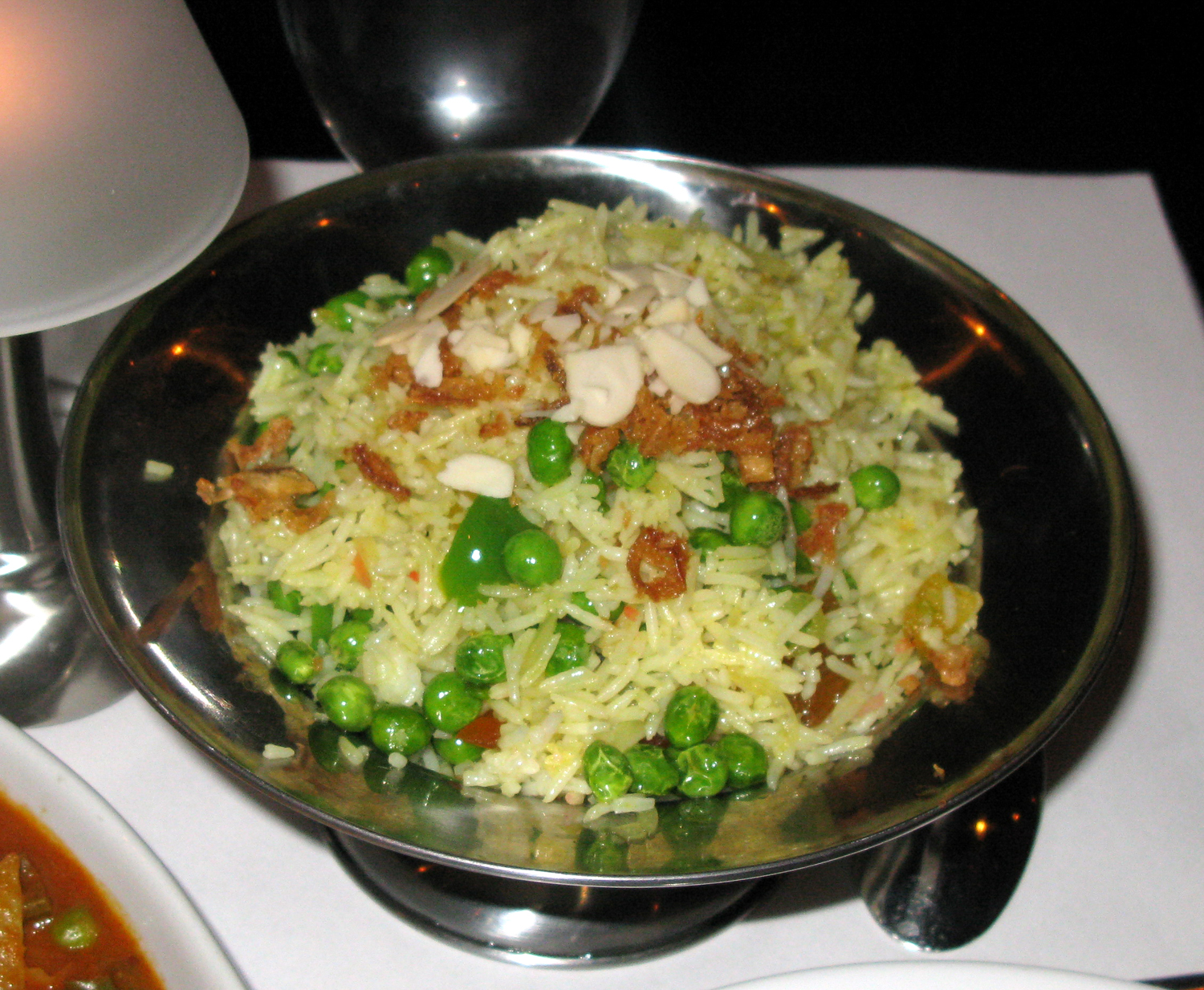
Kashmiri pulao—fried and spiced basmati rice with fried onions, diced green peppers, green peas, dried fruits, and almond slivers
But the gastronomic showpiece of the repast was the unparalleled pulao, one of chef Hussain’s superlative signature rice dishes. Compared to the other remarkable pilaf dishes like the mushroom pilau and the more elaborate Kashmiri pulao, both of which are infused with an amalgamation of aromatic spices, the pulao of fried and spiced rice was the most basic in form, and like the peshawari naan, provided a harmonious balance to the two powerfully spiced dishes. The rice pilaf was stunningly simple yet irresistibly delectable. Presented in a stainless steel pedestal serving bowl covered with a dome lid, the fine basmati rice, which was light and fluffy, was stir-fried with fresh garlic and ginger, jazzed up with golden orange and bright red threads of saffron, and embellished with strands of fried onion and fresh snips of cilantro leaves. Fragrant and flavourful, the dish was phenomenal. My mother adored the pulao dish so immensely that she asked me to order another one to take home. And happily did I comply with her request without hesitation. The rice pilaf dishes alone are worth the trip.
As an extra sweet touch to the birthday meal, I had earlier asked the restaurant to prepare a special treat for my mother. For the celebratory occasion, the talented chef Hussain surprised my mother (and me) with a spectacular cake based on a North Indian recipe. With Indian flair, the gâteau was dressed fancifully with colourful, piped whipped cream frosting and adorned with lively red maraschino cherries. The ambrosial dessert, with a thin blanket of mango purée cream sandwiched between the two soft, moist layers of mango cake, was light and airy. Perfectly baked, assembled, and decorated, the sweet culinary concoction was the other highlight of the gastronomic experience, ending the unforgettable feast on a fabulous, festive note.
The friendly and unpretentious service was rather well-paced that evening as the professional and knowledgeable waitress was the only server working the floor. From greeting people at the door, serving diners seated at tables, and fulfilling take-out orders from incoming customers, to tracking reservations, ensuring all dishes are satisfactory to the dining guests, and clearing the tables before, during, and after servings, she did her very best to accommodate the clientele at the restaurant. It was a busy night for her.
As I write this article, my mouth is watering as I reminisce the various captivating dishes, including the stellar spiced tea, which I had savoured during my visits to this upscale culinary haven. For those among us with an inquisitive mind, a curious palate, and a penchant for vibrant flavours and piquant pleasures, I would give this Indian temple of haute gastronomie a try. The light of epicurean enlightenment shines brightly at Lumière de l’Inde, and sometimes to add a bit of spice to life can be a good thing.


